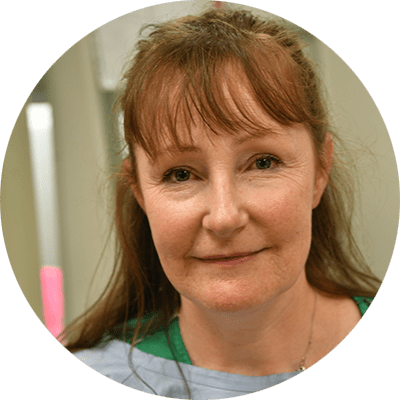Every three days an Australian child is born with dementia – a group of rare genetic disorders that leaves families with a devastating reality. Their children never grow up.
One Flinders researcher has dedicated her career to a particular form of childhood dementia – Sanfilippo syndrome. While Sanfilippo is rare, childhood dementia affects one in 2,800 children in Australia, making it as common as cystic fibrosis.
Professor Kim Hemsley is the head of the Childhood Dementia Research Group within the Flinders Health and Medical Research Institute. She and her colleagues, with collaborators at the University of Adelaide, have made an important discovery that offers a new way to monitor the effectiveness of treatments.
Studying Sanfilippo syndrome in mice, they’ve discovered that progressive lesions in the retina – the innermost layer of tissue in the eye – mirror the level of degeneration occurring in the brain.
“The retina is part of the central nervous system, just like the brain and the spinal cord, and we now know that the changes in the retina occur at a similar rate and start at a similar time to those appearing in the brain,” Professor Hemsley says.
“You can look at the retina much more readily than you can the brain, and you can use optical coherence tomography (OCT) which is something an optometrist does during a standard eye exam.
“We can use that image to tell us whether changes are going on in cells in the retina.”
The research group is now taking retinal imaging even further, hoping it can be used to indicate the success of treatment therapies to slow degeneration and prolong life.
Researchers around the world are working to develop potential treatments for children living with Sanfilippo syndrome, with gene therapy approaches currently under trial in Adelaide and overseas.
“The retinal imaging could be used to monitor disease progression in a child, but if they are given a therapy, we might also be able to monitor its effectiveness,” Professor Hemsley says.
“I’m hoping that if the scientific community knows about this data, the use of OCT can be incorporated routinely in clinical trials to determine therapeutic efficacy.
“If we had newborn screening, you might also be able to routinely schedule a baby who is suspected to have Sanfilippo syndrome for regular OCTs to see if there's any change going on, in a very non-invasive way.”
“The retinal imaging could be used to monitor disease progression in a child, but if they are given a therapy, we might also be able to monitor its effectiveness.”
Caused by mistakes in genes, a child can only develop Sanfilippo syndrome if they inherit mutations in one of four different genes from both parents.
Classical symptoms typically begin to show around the age of five and can present as difficulties or delayed development in talking, reading, writing, walking and playing. This is followed by a progressive intellectual and bodily decline until the child usually passes away by their late teens or early 20s.
“The parents largely have no idea the risk of Sanfilippo is even in their family,” Professor Hemsley says.
“This is one of the main drivers for having newborn screening for this and similar disorders, because parents at the moment don’t realise that they have a child with Sanfilippo until symptoms develop and they are diagnosed.”
Over the past 20 years the Childhood Dementia Research Group – which was established at the Adelaide Women’s and Children’s Hospital before moving to the South Australian Health and Medical Research Institute – has made several significant contributions to the disease.
These include working with a large team of medical researchers in Adelaide and overseas to develop treatments; some failed, but some have provided important and promising outcomes.
One approach appears to stabilise disease in patients treated before two-and-a-half years of age.
Professor Hemsley says while we are nearing a time when the first treatment will be approved for children with Sanfilippo, it won’t mean her work is done.
“One treatment will not be enough as many children will be unable to access it because of medical reasons as well as geographic and financial ones,” she says.
“So, with our collaborators, we are continuing to devise and test potential therapies for Sanfilippo and other childhood dementias to ensure that one day all children born with the disorder can be offered safe and effective treatment.”
Finding a ray of hope for families is what compels Professor Hemsley to keep striving for answers.
Unlike many neuroscientists, her research sees her interact not only with clinicians but also the children and their families — often the strongest advocates for awareness.
“It’s heartbreaking watching the children disappear before your eyes,” Professor Hemsley says.
“It’s hard to imagine how families who have Sanfilippo deal with it day in and day out. They’re absolute heroes.
“It’s quite a unique field and I feel very lucky to be involved. That interaction is most definitely what keeps me here.”
“…with our collaborators, we are continuing to devise and test potential therapies for Sanfilippo and other childhood dementias to ensure that one day all children born with the disorder can be offered safe and effective treatment.”
Download your free copy of Fearless Research
![]()
Sturt Rd, Bedford Park
South Australia 5042
South Australia | Northern Territory
Global | Online
CRICOS Provider: 00114A TEQSA Provider ID: PRV12097 TEQSA category: Australian University










